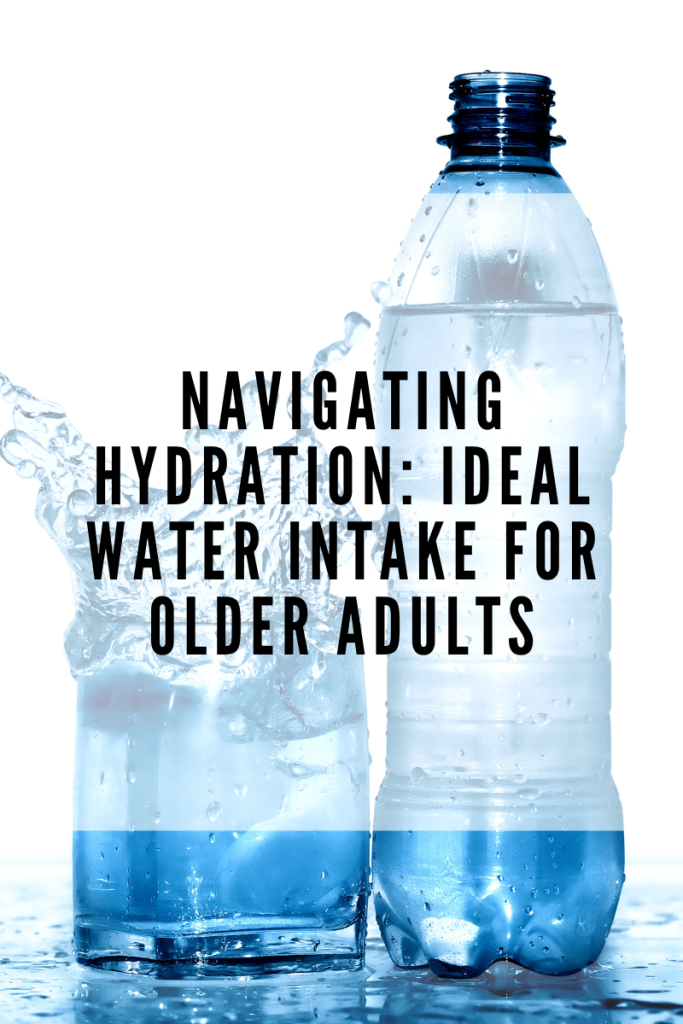Hydration is a cornerstone of health at any age, but for older adults, maintaining optimal hydration levels becomes both more critical and challenging. As we age, physiological changes, medications, and decreased thirst sensation can significantly impact our hydration status, making dehydration a common and serious concern among the elderly. This advanced guide delves into the nuances of ideal water intake for older adults, highlighting the importance of hydration and offering practical strategies to ensure adequate fluid consumption.
The Critical Role of Hydration in Aging
Water is essential for life, playing key roles in cellular function, temperature regulation, and the elimination of waste. In older adults, proper hydration supports cognitive function, kidney health, and cardiovascular function, and can help prevent urinary tract infections, constipation, and even falls. However, aging bodies face unique challenges in maintaining hydration:
- Reduced Thirst Response: Older adults often experience a diminished sense of thirst, which can lead to inadequate fluid intake unless intentional efforts are made to consume water regularly.
- Kidney Function: Age-related decline in kidney function can affect the body’s ability to conserve water, increasing the risk of dehydration.
- Medication Side Effects: Many common medications for chronic conditions can exacerbate dehydration by increasing urination or perspiration.

How Much Water Do Older Adults Need?
While the “8 glasses a day” rule is a good starting point, the ideal water intake for older adults can vary based on factors such as weight, activity level, climate, and health conditions. The National Academies of Sciences, Engineering, and Medicine suggests a daily total water intake (from all beverages and foods) of about 3.7 liters (about 15.5 cups) for men and 2.7 liters (about 11.5 cups) for women. However, these needs may increase for older adults who are physically active, live in hot climates, or have certain medical conditions.
Strategies for Optimizing Hydration
1. Monitor Fluid Intake: Keep track of how much water is consumed throughout the day to ensure it meets the recommended levels. Consider setting reminders to drink water at regular intervals.
2. Eat Water-Rich Foods: Incorporate fruits and vegetables with high water content, such as cucumbers, tomatoes, oranges, and melons, into the diet. These can contribute significantly to overall hydration.
3. Understand Medication Effects: Be aware of any medications that may impact hydration and adjust water intake accordingly.
4. Recognize Dehydration Signs: Educate older adults and caregivers on the signs of dehydration, which can include fatigue, dizziness, confusion, dry mouth, and dark-colored urine.
5. Make Water Accessible: Keep water within easy reach, especially for those with mobility issues, to encourage regular sips throughout the day.
6. Flavor for Motivation: Adding slices of fruits or a splash of juice can make water more appealing for those who find it bland, encouraging increased consumption.
Tailoring Hydration to Individual Needs
It’s essential to tailor hydration strategies to the individual, considering their lifestyle, health status, and personal preferences. For older adults with specific health conditions, consulting with a healthcare provider to determine the most appropriate water intake is crucial. This personalized approach ensures that hydration supports overall health without compromising conditions that may be affected by fluid balance, such as heart failure or kidney disease.
Conclusion
Adequate hydration is a key component of healthy aging, supporting vital bodily functions and enhancing quality of life for older adults. By understanding the unique hydration needs of the elderly and implementing strategies to meet these needs, we can help mitigate the risks associated with dehydration. Remember, staying hydrated is about more than just drinking

Recent Comments